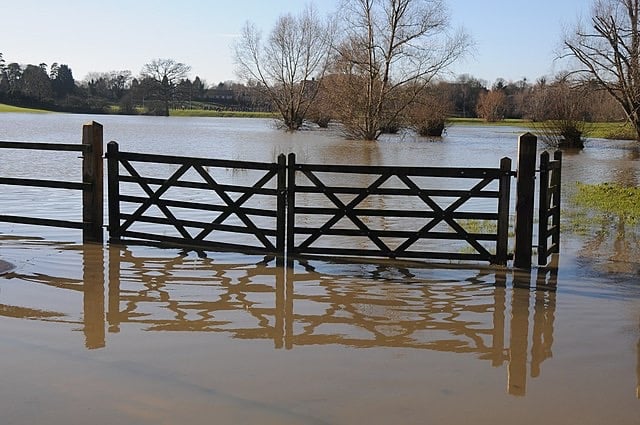First heat health alert of the year as temperatures soar while violent thunderstorms threaten flash floods
Britain is set for a dramatic weather rollercoaster as the nation swelters under potentially record-breaking heat while simultaneously battling violent thunderstorms – as large swathes of the country remain in the grip of official drought conditions.
The UK Health Security Agency (UKHSA) has issued its first yellow heat-health alert of 2025, with temperatures potentially exceeding 30C (86F) on Friday, making parts of Britain hotter than Mediterranean holiday hotspots.
The dramatic weather swing comes as Britain faces its driest and warmest spring in England in over 130 years, with the Environment Agency declaring drought status for the north-west of England following the driest start to spring in 69 years.
SCORCHING HEAT BLAST
Met Office Deputy Chief Meteorologist, Mike Silverstone, said: “After largely benign weather early in the week, some intense, thundery showers will move in on Wednesday evening.
Friday is set to be the scorcher, with temperatures potentially hitting 30-31C in parts of the East Midlands, southeast Yorkshire and southeast England – making these areas warmer than popular holiday destinations including Ibiza, Mykonos and Los Angeles.
The alert is currently in place from 9pm on Thursday 12 June to 8am on 15 June and covers the East of England, East Midlands, London and South East regions.
VIOLENT STORMS INCOMING
But the heatwave brings danger. Yellow thunderstorm warnings have been issued for parts of south west England and South Wales and Northern Ireland, with the Met Office warning of:
- Up to 40mm of rain falling in just THREE HOURS
- Winds gusting up to 50mph
- Frequent lightning strikes
- Large hailstones
- Flash flooding risk
- Travel chaos and power cuts
“These thunderstorms are being triggered by some warm, humid air that is moving into the UK from the south”, explained Deputy Chief Meteorologist Mike Silverstone.
DROUGHT CRISIS DEEPENS
The weather chaos comes as Britain faces its worst drought conditions in decades. Reservoir storage levels in northwest England – home to the picturesque Lake District as well as the cities of Manchester and Liverpool – were lower than during the same time in the 1984, 1995 and 2022 drought years.
Shocking statistics reveal the scale of the crisis:
- It was the driest March across England since 1961
- England received 14.8mm of rainfall which represents 22% of the 1961 to 1990 LTA
- Reservoirs across England were only 77% full, compared with the average 93% for this time of year
- April 2025 has gone down as the sunniest on record for the UK since records began in 1910
HEALTH WARNINGS
Medical experts are urging vulnerable Britons to take precautions as the mercury soars. UKHSA data shows that even at these forecasted temperatures, vulnerable groups and health care services can be impacted.
The heat health alert warns of:
- Increased use of healthcare services by vulnerable populations
- Higher risk to those aged over 65
- Dangers for people with pre-existing health conditions
- Potential strain on hospitals and GP surgeries
Dr Agostinho Sousa, head of extreme events and health protection at UKHSA, said: “Our findings show that even moderate heat can result in serious health outcomes, especially for older adults.
EUROPE-WIDE CRISIS
Britain isn’t alone in its weather woes. Large parts of the Mediterranean and the Middle East remain under warning and alert drought conditions, with March 2025 was the driest March ever recorded in Germany.
WHAT’S CAUSING THE CHAOS?
Ian Lisk, chief meteorologist at the Met Office, said: “It’s all to do with our old friend, the jet stream.” The jet stream has been taking an unusual path, allowing high-pressure systems to dominate and deflect typical British rain away from our shores.
This warm spell will feel different to the fine weather we experienced in May as the humidity will be much higher, making it feel more uncomfortable”, warned Mike Silverstone.
WHAT HAPPENS NEXT?
The National Drought Group convened on June 5 to assess the crisis, with water companies ordered to:
- Fix leaks more quickly
- Communicate frequently with customers
- Prepare drought contingency plans
- Consider water-saving measures
While no hosepipe bans have been announced yet, they remain a possibility if conditions don’t improve.
Looking ahead, By the end of the weekend, the humid and thundery airmass will be displaced by fresher and generally more settled conditions spreading east across the UK.
STAY SAFE IN THE HEAT
Health officials urge Britons to:
- Keep homes cool by closing curtains in rooms facing the sun
- Stay out of the sun between 11am and 3pm
- Wear appropriate clothing including hats and sunglasses
- Apply sunscreen regularly
- Plan physical activities for cooler parts of the day
- Know the symptoms of heat exhaustion and heatstroke
As Britain swelters and storms, one thing is certain – this extraordinary weather is a stark reminder of our changing climate and the challenges that lie ahead.



